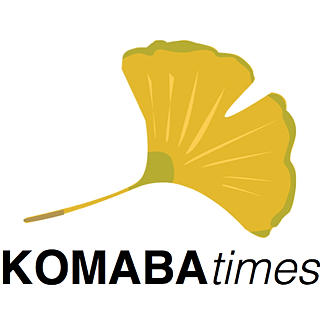Paper Book Culture in Japan
- Komaba Times
- Jul 14, 2017
- 3 min read
Updated: Oct 10, 2019
By YULEE KIM
When I ride the train on the Keio-Inokashira Line, I see people physically holding hand-sized books to read. While studying in Japan, those scenes are quite ordinary here. As a Korean, who is more used to reading e-books than physical books for literature, it is very challenging for me to search the reason why such culture is so popular here and an attracting issue at the same time.

Secondhand bookstore in Jimbocho. Photo by author.
Historical background of paper book culture - Jimbocho. Customers in Japan can easily visit offline bookstores such as Book-off!, Kinokuniya, and Tsutaya in every region: Tokyo, Kyoto, Osaka, and Kobe. How has it been commercialized so widely? According to historical materials, the history of Japan’s book culture starts from Jimbocho, the most famous secondhand bookstore street in Tokyo. It is located between Yasukuni Shrine and Meiji University. There are over two hundred bookstores on that stretch of road, including a large number of second hand stores.
Jimbocho was originally famous as the samurai residential area during the Edo period. However, when imperial rule was restore in the late 19th century, samurai lost their jobs and Jimbocho's ownership got transferred to the nation for the purpose of national education project in Meiji era. Schools were established in Jimbocho and publishing companies came next. As educated people needed more books, the appearance of bookstores was naturally expected. This was the start of the bookstores in Jimbocho.

Secondhand bookstore in Jimbocho. Photo by author.
Most secondhand bookstores run on a small scale. Almost every secondhand bookstore does not go over 10 square meters and these shops are sustained in a collective manners. This also shows Japan's groupism in entrepreneur manner: It may not be huge, but compact, deep, and long-lasting.
Customers in Jimbocho vary from young generations to elders; they may stop-by to have a look around after they finish working at a firm, or come purposely to find the out-of-print comic book.
Japan Book culture in 2017
However, the scale of sales in paper books is estimated to decline in Japan. Although Jimbocho Secondhand bookstore’s existence is important in itself, the book market is changing its consumer behaviour.
Table: Comparison Paper book through online order with e-book

Paper book culture in Japan is experiencing the challenge by the appearance of E-book (electronic version of printed book) along with its active marketing strategies. Even if customers want to order physical books online, they easily find out that e-books are more portable and has competitive prices compared to the same physical book. According to Nikkei Shinbun, e-book markets accounted for its sale of 1.4 billion Yen, which increased approximately by 39.3% compared to that of last year. “E-book formed a watershed in the history of paper book culture in Japan.” A manager in a Shibuya bookstore said. “Although paper books keep their power in the book market, it is true that we will not be able to help admitting to the changes in the book market someday.”

Jimbocho secondhand books area map. Photo by author.
We have no choice but to accept our changes in consumer behavior, but still, I see the importance of paper book. How they keep their values in its physical form gives writers ideas. Existence of the offline bookstore is not just for selling the books, but for reaching the summit of cultural richness. In the summit of culture and civilization, I think bookstores have more substantial value in the sense that it keeps records written both in the past and present: generating the sustainability of the book culture. Sato, the manager who works at a secondhand bookstore in Jimbocho, says that “Although we cannot compare the exact value between e-books and physical books, we still have our value in our physical existence.”





Comments